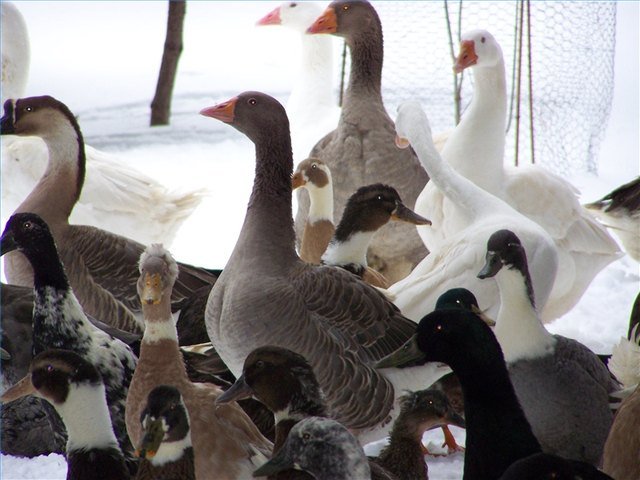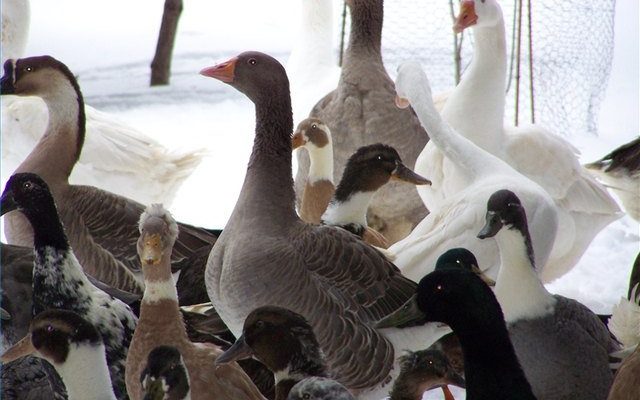
Honestly, if you’re thinking about bringing a goose into your home, you might be wondering where to start. Geese have unique social structures and behavior patterns—kind of like tiny, feathery toddlers. In this blog, we’ll dive into the best practices for training and handling a pet goose, ensuring that your new companion is well-behaved and happy. Whether you’re a city dweller with a little yard or live on a farm, a pet goose can be a quirky yet delightful addition to your life.
Understanding Goose Behavior
Before you jump into training your pet goose, it’s essential to understand their behavior. Geese are naturally social animals. In the wild, they form strong bonds with their flock. That means when you bring one into your home, it’s crucial to become their “flock.” They thrive on social interaction, so don’t be surprised if your goose wants to hang out with you all the time!
You might notice that your goose has its own personality—some are bold and adventurous, while others may be a bit more timid. Recognizing these traits can help you in training. For example, if your goose is cautious, you’ll want to approach training sessions gently, allowing it to feel safe and secure. On the other hand, a more adventurous goose might be eager to learn new things quickly.
Another interesting aspect of goose behavior is their vocalizations. Geese use different honks for various situations. A loud honk might mean they’re excited or want your attention, while softer honks may indicate contentment. Paying attention to these sounds can help you understand how your goose is feeling.
Setting Up A Safe Environment
Creating a comfortable habitat for your pet goose is vital for its well-being. Geese need plenty of space to roam around, so if you have a yard, that’s perfect! Ideally, they should have access to both indoor and outdoor areas. Outdoor spaces allow them to engage in natural behaviors like foraging and waddling. However, be mindful of their safety, especially from other animals.
You’ll want to provide them with a cozy shelter that protects them from weather extremes, predators, and direct sunlight. A simple structure made from wood or recycled materials will work fine. Make sure it has good ventilation and is easy to clean. You can line the floor with straw or wood shavings to make it comfortable and absorbent.
Also, don’t forget about water! Geese enjoy splashing around, so a kiddie pool or a shallow dish filled with water can provide them the fun they crave. Just ensure it’s cleaned regularly to prevent bacteria from building up.
Basic Training Techniques
Training your goose doesn’t have to be complicated; it often relates to establishing trust and communication. Start with basic commands, like “come” or “stay,” using treats as positive reinforcement. Keep some of their favorite snacks handy, such as grains or leafy greens, to encourage them during training sessions.
When training, patience is your best friend. Try to keep training sessions short, around 10-15 minutes, to avoid overwhelming your goose or losing its interest. Each time your goose responds correctly, reward it immediately with a treat or praise. This builds a connection between the behavior and the reward, making it more likely that your goose will repeat that behavior in the future.
You might also consider clicker training. It’s a great way to communicate clearly with your goose. Each time you click the device, follow it with a reward. Over time, your goose will learn that the click means it’s done something right.
Choosing the Right Treats
Speaking of rewards, not all treats are created equal. A healthy diet is crucial for your goose’s overall well-being, so you’ll want to choose treats that are nutritious. Here are some great options:
- Grains: Whole grains like oats, barley, or wheat are excellent choices.
- Fruits: Small pieces of fruits like apples (without seeds), berries, and melons can be delightful.
- Vegetables: Leafy greens like lettuce, spinach, or kale can also be great rewards.
Just remember, moderation is key! Too many treats can lead to health issues. Always balance them with a proper diet, which should primarily consist of specially formulated goose feed.
Handling Your Goose with Care
Handling a pet goose can be a little tricky, especially if it’s not used to being picked up. Start by getting your goose comfortable with you being around. Sit quietly near it and allow it to approach you in its own time. Once your goose seems at ease, you can gently stroke its neck or back, which many geese enjoy.
If you need to pick up your goose, always approach from the front and stay calm. Gently scoop it up while supporting its body, as they can be surprisingly heavy. Keep it close to your chest to make it feel secure. If your goose struggles, lower it back down and try again later—never force it.
A great tip is to associate handling with positive experiences. You can give it treats or pet it while doing so. Over time, your goose will become more comfortable being held and will look forward to those moments.
Common Training Challenges
Like any training process, working with a goose can come with its own set of challenges. One common issue is stubbornness. Geese can be pretty independent, and if they don’t feel like doing something, they might just ignore you. In these cases, try to switch things up—use different treats or make training more exciting with games.
Another challenge can be aggression. Sometimes, geese may honk or hiss if they feel threatened or if they’re asserting their territory. If you’re facing this behavior, don’t panic. Giving your goose space and allowing it to feel secure will help. Gradually reintroduce yourself in non-threatening situations, and always reward good behavior.
Lastly, if your goose seems uninterested or unfocused during training, it might be due to distractions. Make sure the environment is quiet and calm, without loud noises or other animals around. This will help your goose stay focused and engaged.
Building a Strong Bond
Ultimately, the goal of training and handling a pet goose is to create a strong bond. Spend time with your goose just hanging out, talking to it, and observing its behavior. You’ll learn what makes it tick, and it’ll learn to trust you.
Remember, geese are social creatures and enjoy companionship, so don’t hesitate to give them the attention they crave. Whether it’s a gentle scratch behind the neck or hanging out in the yard, every moment counts towards building a loving relationship.
Over time, your goose will recognize you as part of its flock. You’ll enjoy the satisfying feeling of having a loyal companion. Whether they’re waddling behind you or honking happily in the yard, your pet goose can bring a lot of joy to your life.
As you embark on this journey, embrace the quirks, humor, and ups and downs that come with training and handling a pet goose. In the end, it’s all about creating a happy home for you and your feathered friend. Remember, enjoying the little moments can make all the difference!

